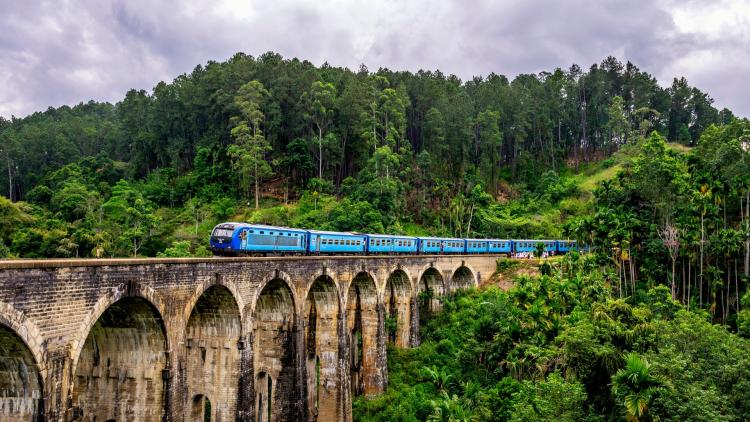Politics of Culture in Contemporary South Asia

Key information
- Start date
- End date
- Year of study
- Any
- Duration
- Term 1
- Module code
- 15PSAH034
- FHEQ Level
- 7
- Credits
- 15
- Department
- South Asia Section
Module overview
This is a module on contemporary South Asia that highlights the multiple forms, languages and avenues of cultural production, and their histories and politics.
The module also considers the relationship between local, national, transnational, global and diasporic domains and the remix and reuse of older repertoires and forms in contemporary situations. The module will consider what it means to study Contemporary South Asia, including what this term refers to and the hegemony of India within South Asian Studies.
This module will be organised around themes central to the politics and histories of the region like casteism, colourism, multilingualism, and the relationship between the sacred and the secular. The module will then look at a variety of cultural texts – theatre, dance, music, TV, podcasts, and social media to name a few – from different nation states that form South Asia as well as from the diaspora.
While considering English (and its local hybrid forms) to be a South Asian language, the module will also draw attention to the richness and salience of vernacular expressive codes.
Prerequisites
None.
Objectives and learning outcomes of the module
On successful completion of this module a student will be able to;
- situate texts in social, political and cultural contexts
- analyse issues related to structural inequities, knowledge production and manipulation
- evaluate key texts and debates within contemporary South Asian studies
Workload
The module is taught over 10 weeks, 2 hours per week consisting of one lecture and one seminar.
Scope and syllabus
- Introduction to Contemporary South Asian Studies
- Multilingualism and Language Politics in South Asia
- Borderland Studies in South Asia
Topics (will vary year to year) from a selection of:
- Sacrality, Socialities and Intimacy in Dance
- Music and Politics
- Islam Neoliberalism and Affect
- Activist Theatre
- Documentary films: from state to self-produced
- Cultural Heritage
- Dalit Literature and Activism
- Racism, Colourism and Skin-Whitening in South Asia
- LGBTQ+ in South Asia: Activism, Representation Mediation
- Many Ramayanas
- Ramayana Beyond India
- (Re)presenting Kashmir in popular culture
- Activism and solidarity on the university campus
- Political and cultural impacts of disasters in South Asia
- Ideologies and insurgencies
Time will be allocated for group presentations.
Method of assessment
- 50% - Group presentation (20 minutes) PLUS Individual reflection on group presentation (500 words)
- 50% - Essay (2000 words)
- The exact assessment deadline dates are published on the relevant module Moodle/BLE page
Suggested reading
All readings for this module are uploaded onto Moodle.
- Appadurai, Arjun, and Carol A. Breckenridge. 1988. “Why Public Culture?” Public Culture 1 (1): 5–9
- Bourdieu, P., 1991. "The Production and Reproduction of Legitimate Language”. Ch. 1 in Language and Symbolic Power. Harvard University Press
- Mines, Diane P. and Sarah Lamb, eds. 2002., Everyday Life in South Asia, Indiana UP.
- Mukhopadhyay, Bhaskar 2006. ‘Cultural Studies and Politics in India Today’, Theory, Culture and Society Annual Review (Sage), Vol. 23, No. 7-8, p-275-288
- Nandy, Ashis 2007. ‘The Lure of ‘Normal’ Politics: Gandhi and the battle for popular culture of politics in India’, South Asian Popular Culture Vol. 5, 2 (October 2007): 167-178.
- Samaj 10 (2014) Ideas of South Asia https://journals.openedition.org/samaj/3699
- van Schendel, Willem 2002. ‘Geographies of knowing, geographies of ignorance: jumping scale in South-east Asia’ Environment and Planning 20.2: 647-68
Additional reading
All readings for this module are uploaded onto Moodle. What follows is a sampling of the 'further readings'
- Roy, Srirupa. 2002. "Moving Pictures: The Postcolonial State and Visual Representations of India.” Contributions to Indian Sociology 36 (1-2): 233-63.
- Brass, Paul R. 1990. Ch. 5 in The Politics of India since Independence. New York: Cambridge Univ. Press.
- Mitchell, Lisa. 2009. Ch. 1 in Language, Emotion, and Politics in South India the Making of a Mother Tongue. Indiana University Press.
- Whelpton, John 2008. ‘Political identity in Nepal: state, nation and community’ in Gellner et al (eds) Nationalism and Ethnicity in Nepal, pp. 39-78.
- Ayres, Alyssa. 2009. Speaking Like a State: Language and Nationalism in Pakistan. Cambridge, UK ; New York: Cambridge University Press.
- Shingavi, Snehal. "Islam and Struggle in Pakistan (Review of Toor, State of Islam).” International Socialist Review 80, November 2011.
- Toor, Saadia. Interview with Jadaliyya and excerpt from State of Islam (2011).
- Khan, Naveeda. 2012. Muslim Becoming: Aspiration and Skepticism in Pakistan. Durham: Duke University Press Books. (1-20, 201-207 required; 145-170 firmly recommended)
- Zeitlyn, B., Janeja, M.K., Mapril, J., 2014. Introduction. Imagining Bangladesh: Contested Narratives. South Asia Multidisciplinary Academic Journal
- Orsini, Francesca. 2015. 'Dil Maange More: Cultural contexts of Hinglish in contemporary India', African Studies 74.2: 199-220.
- Österlind, Eva. 2008. "Acting out of Habits - Can Theatre of the Oppressed Promote Change? Boal's Theatre Methods in Relation to Bourdieu's Concept of Habitus.” Research in Drama Education 13 (1): 71-82.
- Ashis Sengupta 2014 (ed.) Mapping South Asia Through Contemporary Theatre. Essays on the Theatres of India, Pakistan, Bangladesh, Nepal and Sri Lanka.
- Zook, Darren. 2001. 'The Farcical Mosaic: The Changing Masks of Political Theater in Contemporary India.' Asian Theatre Journal 18, 2: 174-199.
- Kumar, P Kesava. 2010. 'Popular Culture and Ideology: the Phenomenon of Gaddar'. Economic and Political Weekly XLV, no. 7. 13 Feb. pp. 61-67.
- Kalra, Virinder S., and Waqas M. Butt. "'In One Hand a Pen in the Other a Gun': Punjabi Language Radicalism in Punjab, Pakistan.” South Asian History and Culture 4, no. 4 (October 1, 2013): 538-53.
- Lochan, V. (2019). Embodied forms of politics and identity in South Asian protest movements: Pinjra Tod and Delhi. Asian Journal of Women’s Studies, 25(1), 132–147.
Disclaimer
Important notice regarding changes to programmes and modules.

